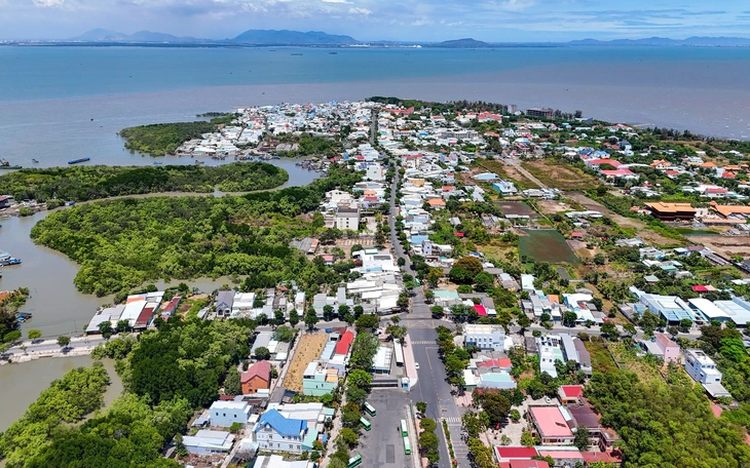
Can Gio is one of the four designated locations for Ho Chi Minh City's free trade zones. Photo: Quang Dinh / Tuoi Tre
These zones are expected to not only boost the local economy but also elevate the city’s position on the global trade map.
Based on the city's master plan approved by the prime minister, with a vision to 2050, and following a recent administrative boundary expansion, the Ho Chi Minh City Department of Industry and Trade has reported on the proposed free trade zones, their progress, challenges, and recommendations.
Ba Ria-Vung Tau Province and Binh Duong Province were amalgamated into Ho Chi Minh City in a national administrative restructuring drive that reduced the number of Vietnam's provincial-level units to 34 from 63, effective from July 1.
According to the plan, Ho Chi Minh City will include four free trade zones, namely Can Gio (1,000-2,000 hectares), Cai Mep Ha associated with a seaport, Binh An, and Bau Bang.
For the seaport-connected free trade zone in the Cai Mep Ha area (now in Tan Phuoc and Tan Hai wards), the project covers 3,764 hectares, divided into three functional areas and eight sub-zones.
On May 21, the former Ba Ria-Vung Tau People's Committee submitted the project to the central government for appraisal and approval. The Ministry of Industry and Trade has provided written feedback.
The Can Gio free trade zone was approved in the previous Ho Chi Minh City planning for 2021–30, with a vision to 2050, and the city’s adjusted master plan to 2040, with a vision to 2060.
The project covers about 1,000-2,000 hectares, linked to the Can Gio international transshipment port and Ganh Rai Bay.
The Ho Chi Minh City Department of Industry and Trade is currently advising the municipal government to restructure the research team for the project.
The An Binh free trade zone is planned near An Binh Railway Station (formerly in Di An City), located along the 53.63km An Binh-Bau Bang section of the Ho Chi Minh City-Loc Ninh railway line.
This line is intended to connect Bau Bang Station with logistics centers in former Binh Duong Province and the Cai Mep-Thi Vai deep-sea port, as well as the Moc Bai border gate in Tay Ninh Province.
The Bau Bang free trade zone has been included in Binh Duong’s planning for 2021–30, with a vision to 2050, located along the Ho Chi Minh City-Loc Ninh railway line.
However, the project is entirely dependent on the construction progress of the railway, which is still in the research phase and not yet developed.
Therefore, the Ho Chi Minh City Department of Industry and Trade has proposed postponing the free trade zone project development to the 2035–40 period to align with the railway’s completion timeline.
Investors show interest
According to the Ho Chi Minh City People’s Committee, the free trade zone projects have attracted interest and support from both domestic and international investors.
Major investors such as DP World, Vingroup, and the Geleximco joint venture have expressed their interest in participating in the projects.
The department’s report also outlines various challenges, including the lack of comprehensive legal regulations and specific policies. The development of these policies is hindered by current legal frameworks.
Additionally, the city’s economic scale and administrative boundaries have changed following the merger policy. Therefore, it is necessary to reassess the current state of the logistics sector and regional supply chains to leverage the strengths of Binh Duong (industry), Ba Ria-Vung Tau (marine economy and logistics), and Ho Chi Minh City (international finance).
The Department of Industry and Trade has proposed that the government approve the free trade zone proposals and develop a strategic scheme for their growth, along with preferential policies that are open, flexible, and diverse to attract investment and facilitate business operations.
As for the 100ha An Binh and 100ha Bau Bang free trade zones, the Ho Chi Minh City administration said they cannot be implemented at this stage.
Therefore, on April 1, 2025, the former Binh Duong People's Committee tasked Becamex IDC with researching a free trade economic zone project in Tan Uyen Ward, covering 500 hectares.
However, this location is not included in Ho Chi Minh City’s free trade zone planning.


Max: 1500 characters
There are no comments yet. Be the first to comment.